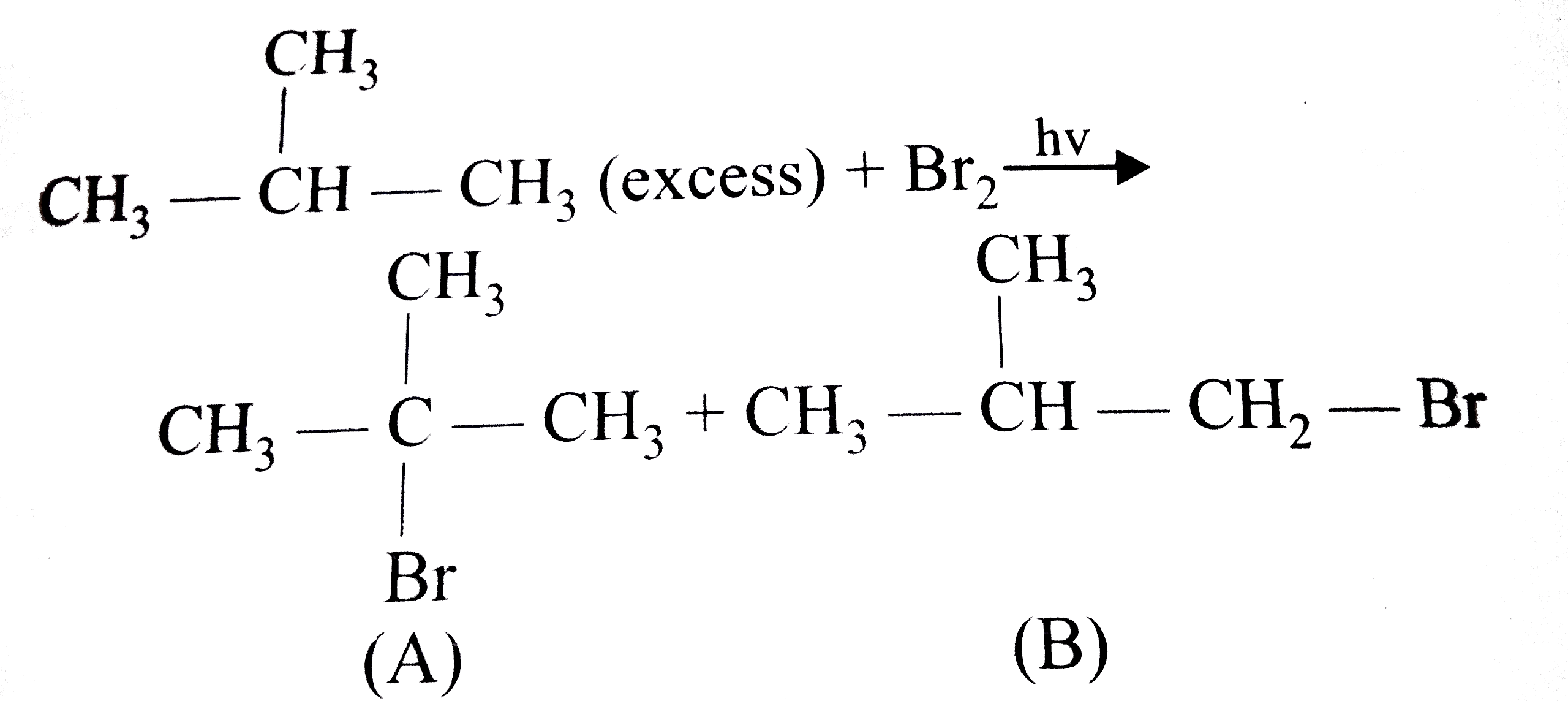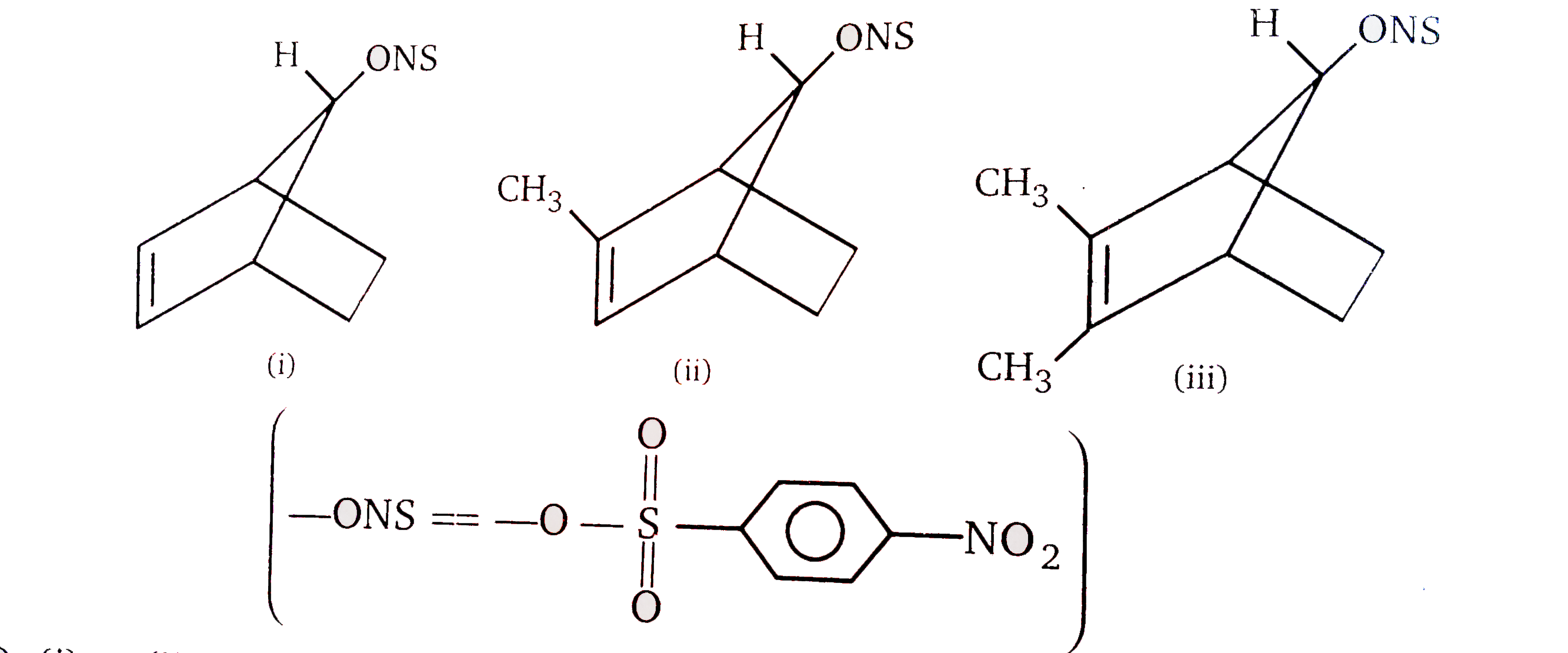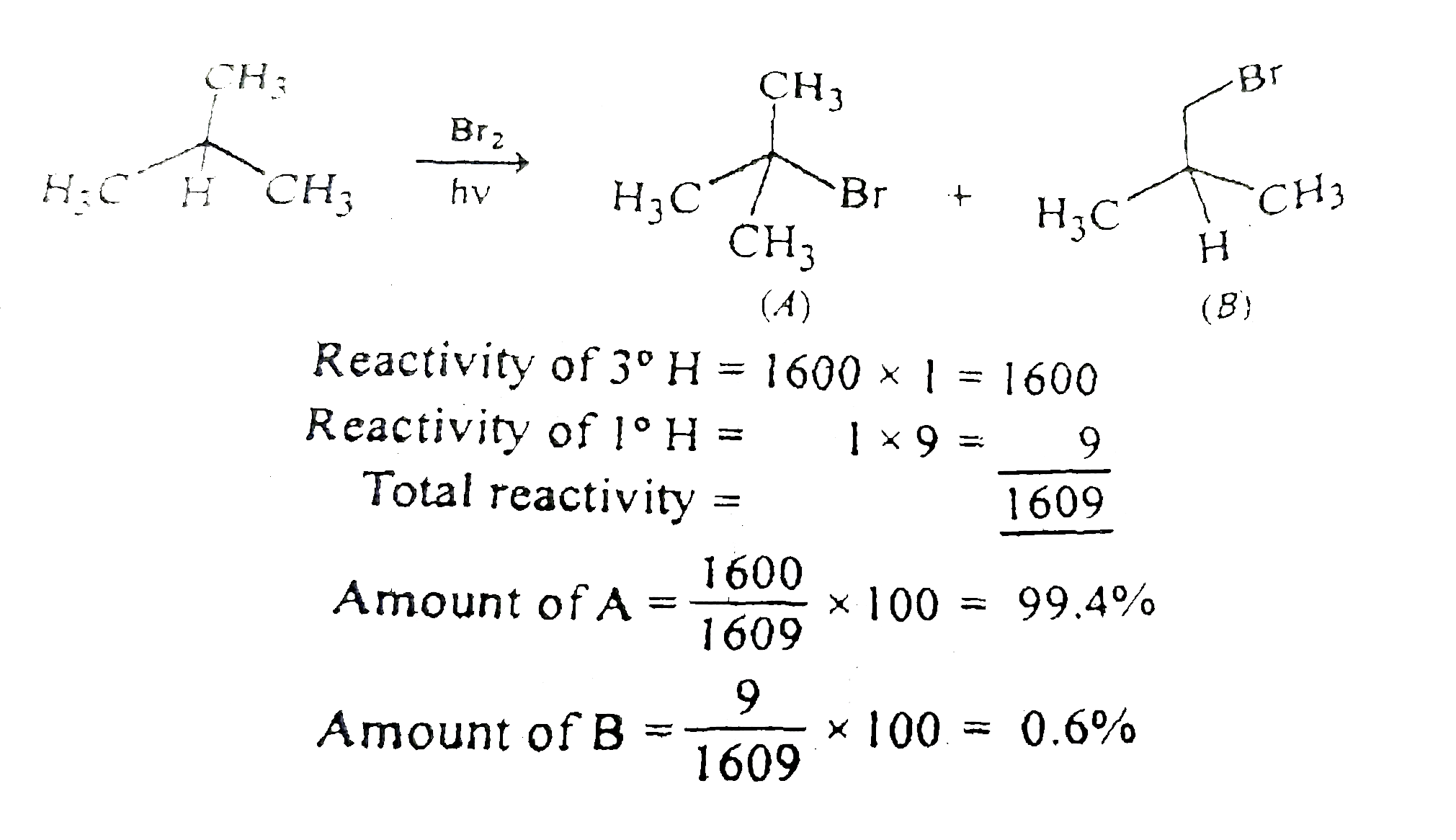The relative reactivity of 1∘H,2∘Hand3∘H in bromination reaction has been found to be 1:82:1600 respectively.In the reaction

The percentage yield of (A) and(B) are expected to be:
99.4%,0.6%
50%,50%
0.6%,99.4%
80%,20%
The correct Answer is:A
Topper's Solved these Questions
- HYDROCARBONS (ALKANE, ALKENE and ALKYNE)Book:HIMANSHU PANDEYChapter:HYDROCARBONS (ALKANE, ALKENE and ALKYNE)Exercise:Level 2 (Q.51 To Q.75)
Explore 25 Videos
- HYDROCARBONS (ALKANE, ALKENE and ALKYNE)Book:HIMANSHU PANDEYChapter:HYDROCARBONS (ALKANE, ALKENE and ALKYNE)Exercise:Level 2 (Q.76 To Q.100)
Explore 25 Videos
- HYDROCARBONS (ALKANE, ALKENE and ALKYNE)Book:HIMANSHU PANDEYChapter:HYDROCARBONS (ALKANE, ALKENE and ALKYNE)Exercise:Level 2 (Q.1 To Q.25)
Explore 24 Videos
Similar Questions
The relative reactivity of 1∘,2∘and3∘ hydrogens in chlorination reaction has been found to be 1:3.8:5 In the reaction,

The ratio of the amount of the poroduct (A),(B),© and (D) is expected to be:
View SolutionThe relative of 1∘:2∘:3∘ hydrogen to bromination is 1:82 :1600 . Calculate relative amount of each product on monobromination of iso- butane .
View Solution
Knowledge Check
The relative reactivity of 1∘H,2∘H and 3∘H in bromination reaction has been found to be :82:1600 respectively. In the reaction.

The percentage yields of the products (A) and (B) respectively are expected to beA(a) 99.4%,0.6%B(b) 50%,50%C(c) 0.6%,99.4%D(d) 80%,20%The relative reactivity of 1∘:2∘:3∘H's to brominate is 1:82:1600, respectively. In the reaction
CH3−CH3∣CHExcessCH3+Br2hv−−→CH3CH3∣C∣Br(A)CH3+CH3∣CH3(B)CHCH3Br
the percentage yield of the products (A) and (B) are expected to beA72,28B80,20C99.4,0.6D4.65,35The reaction conditions leading to the best yield of C2H5Cl are :
AC2H6(excess)+Cl2UV light−−−−→BC2H6+Cl2Dark−−−−−−−−−−→room temperatureCC2H6+Cl2(excess)UV light−−−−→DC2H6+Cl2UV light−−−−→
The electronegativity of H, N are 2.1, 3.0 respectively. Calculate percentage ionic character of H-N bond.
View SolutionThe reaction conditions leading to best yields of C2H5Cl are :
View SolutionThe reaction conditions leading to the best yield of C2H5Cl are
View SolutionRelative rate of reaction with H2O

View SolutionThe reaction conditions leading to the best yield of C2H5Cl are
View Solution
